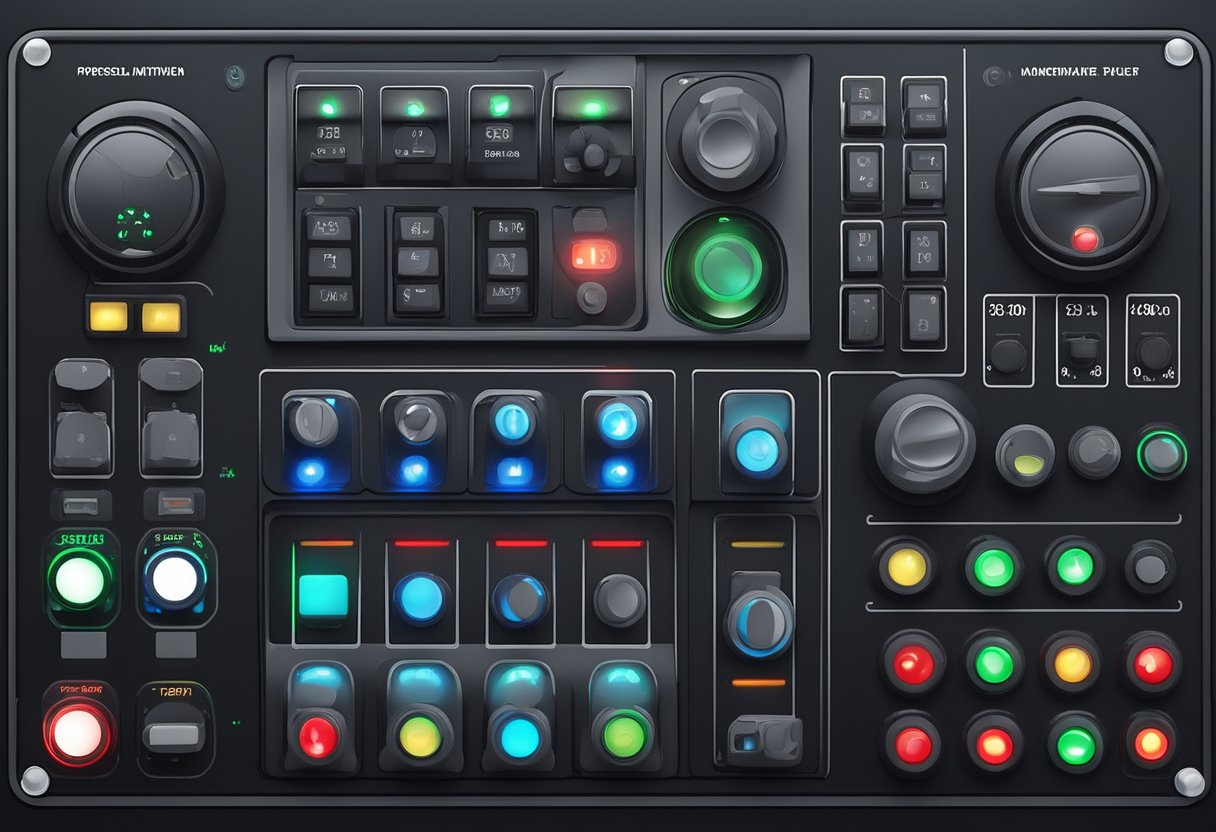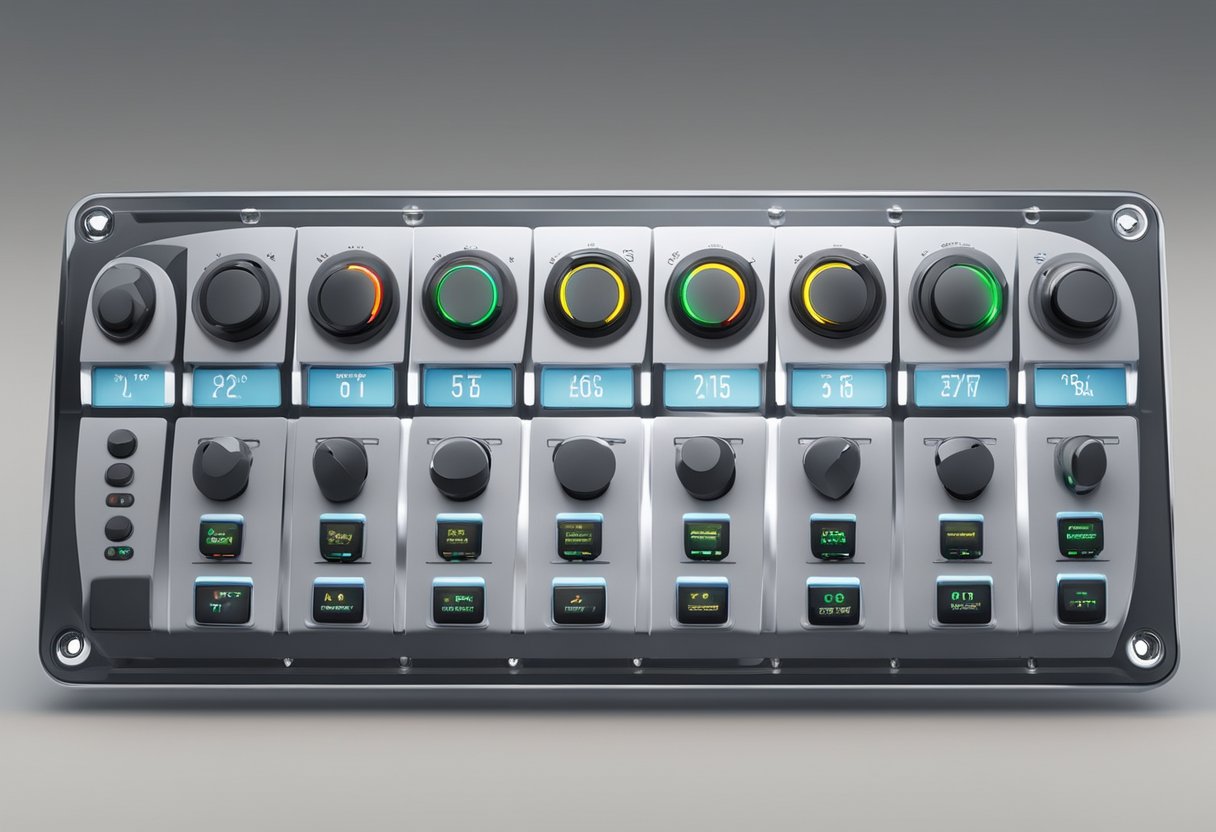Contact
Write to Us And We Would Be Happy to Advise You.
Do you have any questions, or would you like to speak directly with a representative?
By peter
If you’re a boat owner, then you know how important it is to have a reliable electrical system. One of the key components of your boat’s electrical system is the marine membrane switch panel. This type of panel is designed to control and monitor various electrical circuits on board, making it an essential component of your boat’s electrical system.

Marine membrane switch panels are designed to be durable and reliable, even in harsh marine environments. They are typically made from high-quality materials that can withstand exposure to saltwater, UV rays, and other elements that can damage electrical components. In addition, these panels are designed to be easy to use, with intuitive controls that allow you to quickly and easily turn on and off different devices on your boat.
Whether you’re a seasoned boater or just starting out, a marine membrane switch panel is an essential component of your boat’s electrical system. With its durable construction, intuitive controls, and reliable performance, this type of panel can help you keep your boat running smoothly and safely, no matter where your adventures take you.

Marine membrane switch panels are an essential component of modern boats and yachts. They provide a reliable and efficient electrical control system on board. These panels are designed to withstand harsh marine environments and provide a user-friendly interface for controlling various electrical systems on the boat.
The design of marine membrane switch panels is based on the principles of simplicity, reliability, and functionality. The panels are designed to be easy to use, with clear and concise labeling of all switches and buttons. They are also designed to be reliable, with high-quality components that can withstand the rigors of marine environments.
The layout of the switches and buttons on the panel is also carefully considered. The switches are arranged in a logical and intuitive manner, with related switches grouped together. This makes it easy for the user to quickly find the switch they need and operate it without confusion.
The materials used in the construction of marine membrane switch panels are carefully selected to ensure durability and reliability. The panels are typically made from a combination of high-quality plastics, metals, and adhesives that are resistant to moisture, saltwater, and UV radiation.
The switches and buttons on the panel are made from materials that are designed to withstand repeated use and exposure to the elements. They are typically made from high-quality plastics or metals that are corrosion-resistant and durable.
In addition to the materials used in the construction of the panel, the materials used in the wiring and electrical components are also carefully selected. High-quality wires, connectors, and other electrical components are used to ensure that the panel operates reliably and efficiently.
Overall, marine membrane switch panels are an essential component of modern boats and yachts. They are designed with simplicity, reliability, and functionality in mind, and are made from high-quality materials that can withstand the rigors of marine environments.

When it comes to marine membrane switch panels, there are three main types to consider: tactile feedback panels, non-tactile panels, and backlit panels. Each type has its own advantages and disadvantages, so it’s important to choose the one that best fits your needs.
Tactile feedback panels are designed to provide a physical response when a button is pressed. This type of panel is ideal for situations where you need to be able to feel the button press, such as in low-light conditions or when wearing gloves. Tactile feedback panels are also useful for applications where accuracy is important, such as in navigation or control systems.
Non-tactile panels, on the other hand, do not provide any physical feedback when a button is pressed. Instead, they rely on visual cues to indicate that a button has been activated. This type of panel is best suited for applications where visual feedback is more important than tactile feedback, such as in entertainment or communication systems.
Backlit panels are designed to provide illumination in low-light conditions. This type of panel is ideal for applications where visibility is important, such as in navigation or control systems. Backlit panels can be either tactile or non-tactile, and they are available in a variety of colors and intensities to suit your needs.
No matter which type of marine membrane switch panel you choose, it’s important to consider factors such as durability, reliability, and ease of use. By carefully evaluating your needs and choosing the right panel for your application, you can ensure that your marine electronics system will perform reliably and efficiently for years to come.
Marine membrane switch panels are manufactured using a process that involves multiple steps. Here are two of the most important steps:
The first step in the manufacturing process of marine membrane switch panels is printing the circuitry. This step involves printing the circuitry onto a substrate material using conductive ink. The conductive ink is typically made up of silver, copper, or carbon particles that are suspended in a liquid medium. The circuitry is printed onto the substrate material using a screen printing process.
The second step in the manufacturing process of marine membrane switch panels is laminating layers. This step involves laminating multiple layers of materials together to form a single membrane switch panel. The layers typically include a graphic overlay, a spacer layer, a circuit layer, and a backer layer. The graphic overlay is the top layer of the membrane switch panel and is made up of a printed graphic that provides the user with visual feedback. The spacer layer is typically made up of a dielectric material that separates the circuit layer from the graphic overlay. The circuit layer is the layer that contains the printed circuitry, and the backer layer is typically made up of a pressure-sensitive adhesive that allows the membrane switch panel to be attached to a surface.
Overall, the manufacturing process of marine membrane switch panels is a complex process that involves multiple steps. By printing the circuitry and laminating layers together, manufacturers are able to create durable and reliable membrane switch panels that are ideal for use in marine environments.
When it comes to installing marine membrane switch panels, there are a few important things to keep in mind to ensure a successful installation and integration. In this section, we will discuss the two main aspects of installation: mounting techniques and electrical connections.
To mount your marine membrane switch panel, you have several options. One common method is to use screws to attach the panel to a flat surface. Make sure to use the appropriate screws and anchors to ensure a secure fit. Alternatively, you can use adhesive tape or Velcro to attach the panel to a surface. This method is ideal if you want to avoid drilling holes in your boat.
Another option is to install the panel in a flush mount. This method involves cutting a hole in the surface and mounting the panel so that it sits flush with the surface. This method provides a clean, professional look, but requires more effort and skill to install.
Once you have mounted your marine membrane switch panel, you will need to make the necessary electrical connections. The specific connections you will need to make will depend on the type of panel you have and the devices you are connecting to it.
Before making any connections, it is important to ensure that all power sources are turned off. This will prevent any accidental electrical shocks or damage to your devices. Once you have turned off all power sources, you can begin making your connections.
Most marine membrane switch panels come with clear labeling, making it easy to identify which wires need to be connected to which devices. Make sure to follow the manufacturer’s instructions carefully to ensure that your connections are correct.
In general, it is a good idea to use marine-grade wiring and connectors to ensure that your connections are durable and reliable. Make sure to securely fasten all connections to prevent any accidental disconnections.
By following these installation and integration tips, you can ensure that your marine membrane switch panel is installed correctly and functions properly.
Marine membrane switch panels are designed to withstand harsh marine environments, but they still require proper maintenance to ensure their longevity. In this section, we will discuss some tips on how to maintain and repair your marine membrane switch panel.
One of the most effective ways to protect your marine membrane switch panel is by applying a protective coating. Protective coatings can help prevent damage from water, salt, and other environmental factors that can cause corrosion and wear. Some of the most common protective coatings used for marine membrane switch panels include:
Before applying any protective coating, it is important to clean the surface of the switch panel thoroughly. Any dirt or debris left on the surface can prevent the coating from adhering properly. Once the surface is clean, apply the protective coating according to the manufacturer’s instructions.
Despite proper maintenance, your marine membrane switch panel may still require repair or replacement at some point. Here are some tips on how to repair or replace your marine membrane switch panel:
By following these tips, you can ensure that your marine membrane switch panel remains in good condition and continues to function properly for years to come.
Do you have any questions, or would you like to speak directly with a representative?